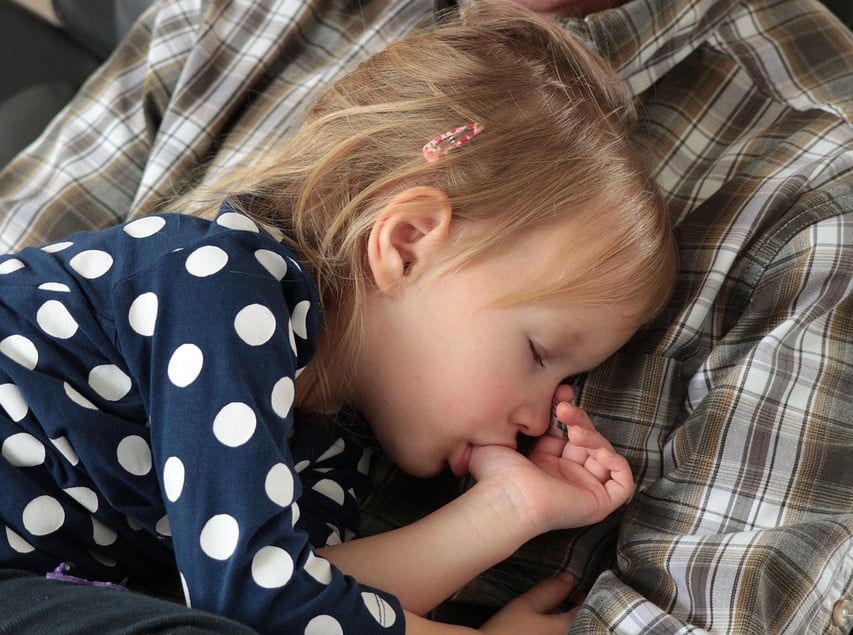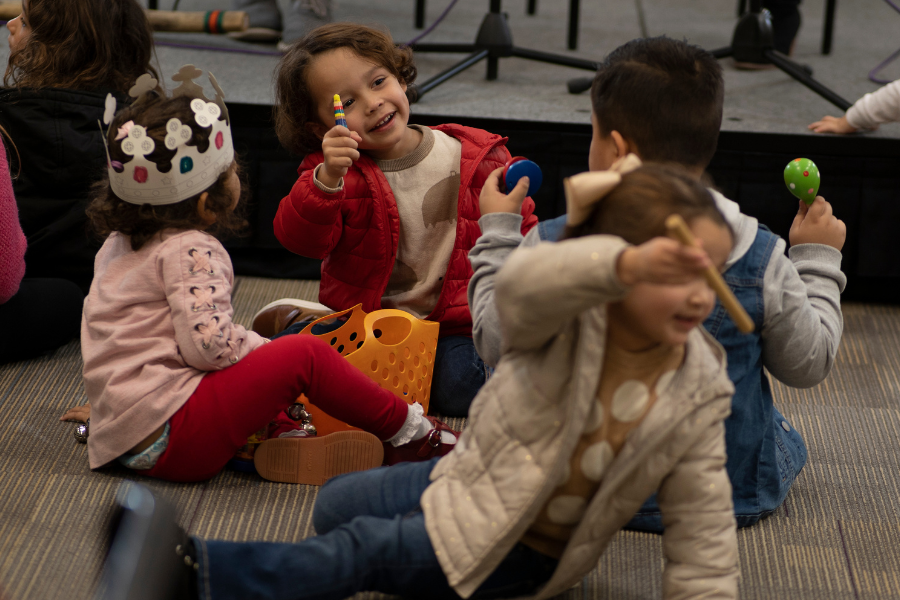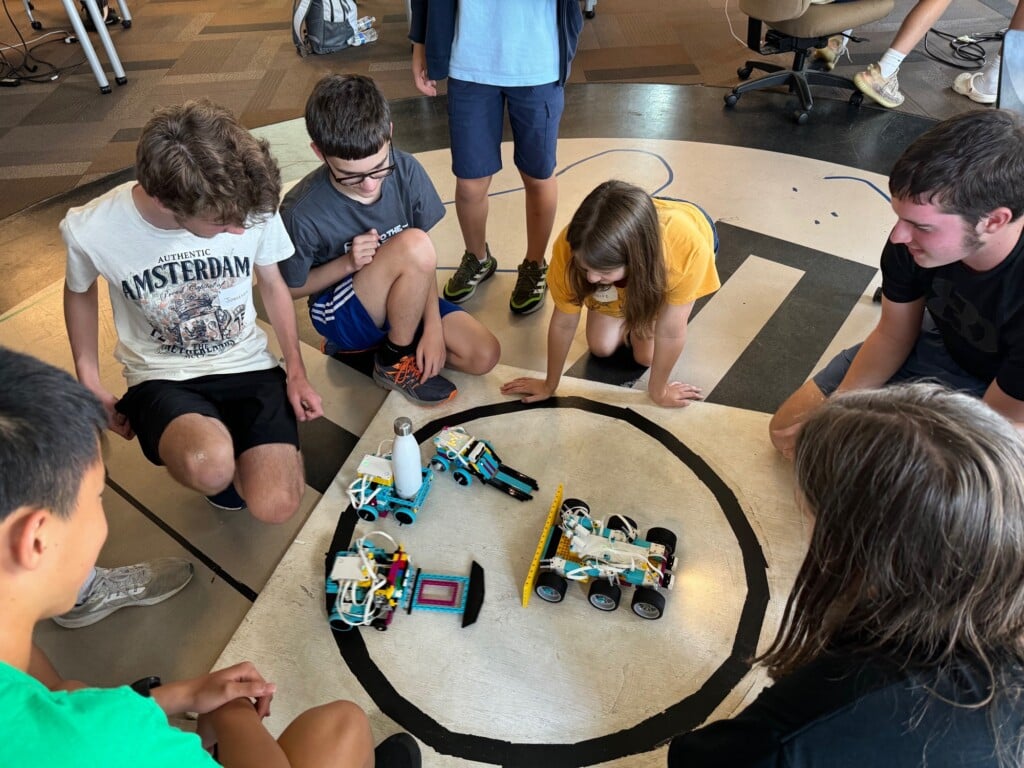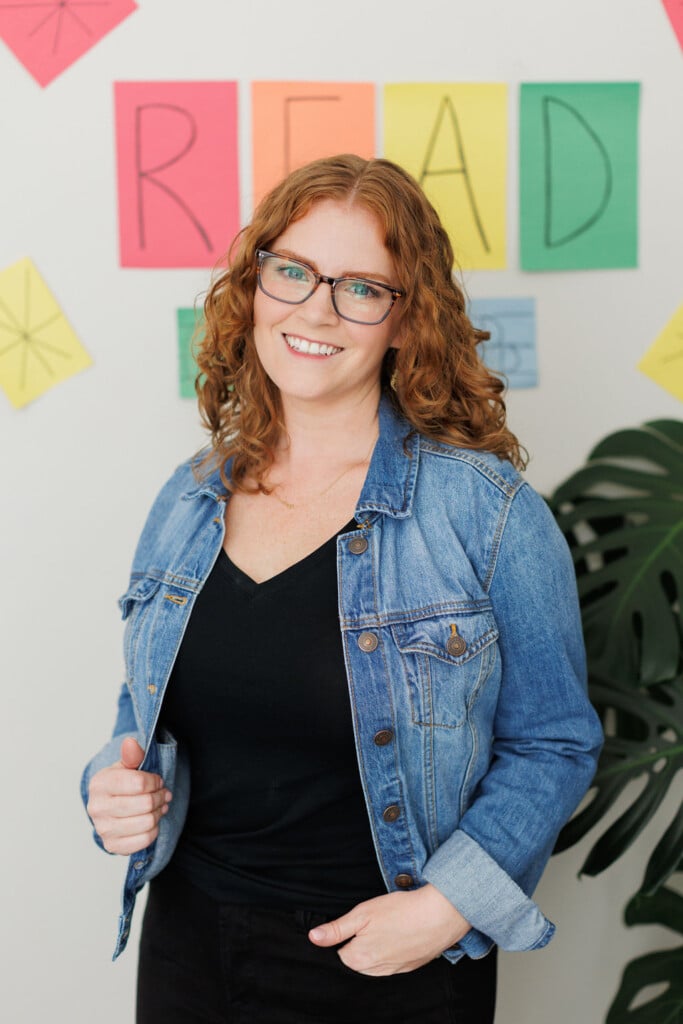ASK A MOM: Lying toddlers, weeknight dinners, and separation anxiety
Molly Grantham tackles your parenting questions
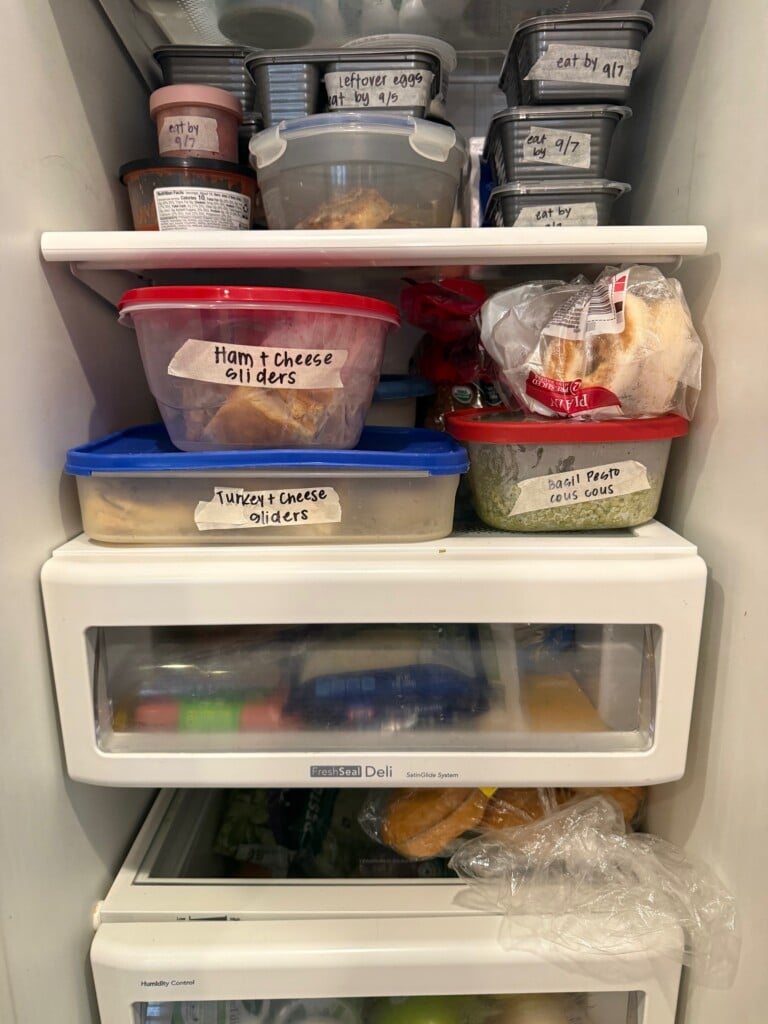
Q: A few weeks ago, my 2-and-a-half-year-old daughter broke two plates in the kitchen (thank God she didn’t hurt herself). I remember keeping the plates in the middle of the table, so I asked her how they broke. She said that they rolled down the table by themselves. It was the first time she ever lied to me. I didn’t think it was a big deal, so I ignored it. Ever since that incident, she has been lying to me constantly. For example, lying to me about washing her hands, cleaning up her toys, etc. Any advice on how to tell her I know she has been lying to me and how am I supposed to stop this behavior? —Tia
A: I dare say most parents are raising kids who occasionally lie.
But I’m not a parenting expert (just a trained reporter who can find answers), so I looked to pediatric behavioral specialists at Cone Health Pediatrics in Greensboro. They say you SHOULD address the lying, not ignore it, and teach the difference between truth and fantasy.
“Talk about honesty when everyone’s calm, not right in the middle of the meltdown,” says Dr. Thomas Kuhn (now retired). “As parents, we have many opportunities to teach children how to become better people. Sometimes the lessons are simple and require little effort. Other lessons, such as honesty and the truth, may take a lifetime of reinforcement. Remaining diligent and being a good listener are the best ways we can teach our children how to tell the truth.”
Dr. Kuhn also says that kids emulate what they observe. If you show them honesty matters, even in small ways, they’ll absorb that more than going to time out.
And, Tia, research shows kids start experimenting with “untruths” as early as age 2. Lying actually shows developmental progress, as their brains are hitting new milestones in imagination, problem-solving, and theory of mind. Meaning, your daughter is basically showing you that she realizes, “Hey, Mom might know everything. Let’s test this out.”
As added backup, the American Psychological Association calls a 2-and-a-half-year-old lying NOT a sign of poor morals, but rather “a sign of creativity.” Kids who tell fibs at age 2, they say, are often better with perspective and problem-solving later in life.
But back to not ignoring it… Dr. Kuhn says if fibbing is her go-to, try gentle course correction. Otherwise, she learns that you think rolling plates is appropriate. Keep it simple. Call things out calmly. Something like, “Plates don’t roll off tables by themselves. I think you might be telling me a pretend story.” Or “I love your imagination. But I need the real story so I can help you. Try again.”
Then praise the heck out of the truth when it comes. A Child Mind Institute says toddlers thrive on reinforcement, and praise for honesty sticks faster than punishment for lying. So, use that to your advantage. “Thank you for being honest. That helps me trust you.”
If, by elementary school, your child is lying to manipulate, avoiding all responsibility, and showing no empathy when caught, check in with a pediatrician or counselor.
Until then, good luck. Seems you’ve got classic toddler brain growth + a side of sass. (And who wants to raise a daughter to be a wallflower, anyway?)
Q: Hi Molly! Both of my kids play sports, so weeknight dinners are either at 4pm or 9:30pm. I need some easy, go-to meals that I can make ahead so we aren’t tempted to hit the drive-thru. I’m not much of a cook (just ask my kids – ha), so I’m open to any local grab-and-go options that aren’t too expensive. I just need things I can easily re-heat if needed. —Laura
A: I feel this question deep in my bones.
So much so, that this year, Wes and I rearranged our family budget to hire someone to help us find an answer. Her name is Sallie. I will not share her last name, as I don’t want anyone else to take her from us. I know how horrible this sounds, but I also know that between last October and May, we spent way too much at Chipotle, Chick-Fil-A, and Jersey Mike’s because I didn’t have the bandwidth to pre-plan meals for three kids juggling eight activities, five days a week. Plus, I hate to cook.
Sallie became our solution. She is an Angel dropped from the heavens. In one short month, she’s helping with the exact dilemma you pose: WHAT DO WE FEED OUR KIDS WHO LIVE ON DIFFERENT NIGHTLY SCHEDULES?
Her solution for us involved a deep dive into our kitchen, pantry, and schedules. Though her personal plan and menu for us wouldn’t necessarily be your specific plan, I am happy to pass along her general tips. Because you asked. Because it’s my column and I can. And, because, well, I get it. If her ideas can help you or any other parent juggling the nightly rat race of school, sports, and multiple kids… let’s share.
First off, Sallie had us buy specific see-through Tupperware containers. I had cute colored ones. She said to ditch them. You need to see what food is inside when you open the fridge. Adorability doesn’t count. Effectiveness does.
Second, she leaves specific ideas for meals that she, Wes, or I can make. If we don’t eat it for dinner that night, or there are leftovers, it gets put in these containers as a single portion. These have been lifesaving. Anyone—even our 5-year-old—can grab one. I’ve taken the single portions to my 14-year-old daughter when I pick her up from volleyball to eat in the car on the way to soccer.
It’s cheaper and healthier than the drive-thru. Win-win.
Sallie also has the three of us making snack packs for lunchboxes, after school, or in between practices. Same concept, just not full meals. Cashews, protein balls, fruit, tortillas wrapped with peanut butter and bananas, etc. They go in one Tupperware container with multiple compartments. (Think homemade Lunchables.) Whoever prepares the food puts a piece of scotch tape on the outside and writes in Sharpee what day it should be eaten by. We also put what meal is inside if it’s not visually obvious. Example: “Chicken Caesar salad with pasta, eat by 9/14.”
If we have three of those in the fridge at once, that’s dinner for three people, already portioned in their own containers.
Note: The Tupperware containers she recommends (all available on Amazon) have smaller sealed jars inside so dressing isn’t sitting on lettuce, or barbecue sauce for chicken nuggets is separate.
Sallie also makes smoothies—a big batch in a blender with real fruit. She then pours them into individual to-go cups and puts them in the fridge with their expiration date. She also puts cut up fruit in one Ziploc bag (bananas going brown are a great addition in these) and sticks it in the freezer. Whenever my 14-year-old wants to make a smoothie, she gets that out, puts it in a blender with milk and protein powder, and it’s done.
We’ve had Sallie’s system and tips in place for one month. I’ll say again: Life changing.
I asked her to chime in. Here is her input:
- Produce: Prep it right after grocery shopping. When fruit and veggies are washed, cut, and visible, kids are more likely to reach for them.
- Snack packs: Fill ‘em. Also add variety so it’s fun for a kid to open. Fruit (blueberries and raspberries are small and fit in well), raw carrots, slider sandwiches, hummus, apples, peanut butter, etc. The goal is for kids to throw a snack pack in their lunch box everyday with the proteins I prep, then add nuts or yogurt from pantry. Also easy for a parent to grab on way to a sports practice or activity.
- Breakfast prep: Ziploc reusable smoothie meals. Especially for athletes, who need the protein. You can also prep a breakfast casserole, overnight oats, or chia pudding.
- Remember that kids often don’t even know what they like and don’t like. For instance, Hutch [Molly’s 10-year-old] told me he ‘Did not like sausage!’ Yet, I made a sausage/rice casserole and he loved it. Same with Hobie [Molly’s 5-year-old] who said, ‘I hate Alfredo!’ I told him it was ‘cheesy pasta’ and he loved it and had seconds. Both were variations of the classics. I snuck veggies in. Pro Tip: Trader Joe’s has gnocchi that’s actually cauliflower, and kids can’t tell. Casseroles and one pot-pan dishes are easy to sneak in veggies.
- Crock Pot: Use it. Throw meals in there for dinner that night, then prep the other snack packs and to-go meals while it cooks. A crockpot is an amazing time management tool. You can Google ‘100 Crock Pot recipes’ for tons of ideas.
- White board on the fridge/hanging in pantry: Write out what’s available. SNACKS: (then list the snack packs), MEALS: (list the meals), LEFTOVERS: (list what’s left). I also list ideas for each category for kids to read and then take with them. Like, “cheese and crackers,” “cashews,” “energy bar,” “mandarin oranges,” “chips and salsa.” It takes the guesswork out of ‘What do I want to eat? What do we have?’ It can make them feel independent, almost like a menu, and they don’t have to ask mom. If the child eats something from there, they can then wipe it off ‘the menu’ and feel involved in the process.
Sallie is amazing. I think she should “Bet On Herself” and start her own business, but that’s a different column for a different time.
Q: My 3-year-old started having meltdowns going to school last week out of nowhere. She had no problem last year and doesn’t have any issues with the children in her class, it is just like separation anxiety from me all over again. How do I make this easier for her (and me)?
A: Tons of kids go through meltdowns on school mornings, even if in the past they were fine. Separation anxiety redux is considered completely normal at the age of 3 (similar to Question 1 above!) and is not a quirky toddler glitch. It’s evolution’s way of saying, “I like you, and I don’t like being apart.”
More good news? You’ve got options. I pulled evidence-based advice from multiple sites to give you five suggestions on how to have a happier goodbye.
1] Keep the goodbye quick and consistent. Child Mind Institute says pick something sweet and reliable. A special handshake, double blow-kiss, or “goodbye hug + secret phrase.” Brief. Same every day. The article warns that “lingering is the emotional equivalent of dragging out the ripping off of a Band-Aid.”
2] Predictability is your power. Kids thrive on what’s next, so the night before, preview the morning: “After breakfast, we’ll get dressed, brush teeth, then walk to school.” This August 2025 article describes routines like “emotional speed bumps—they slow the chaos and give horsepower to calm.”
3] Validate the Feelings, Then Follow Through. Let your child know you understand how they feel by saying something like, “I know it’s hard to say goodbye, and that can feel big and scary.” Then commit to a promise of when you’ll see them again. “I’ll be back after lunch to hear your stories.” Just make sure you stick to it, says Children’s Hospital of Philadelphia. “Broken promises unintentionally fuel the fire of mistrust.”
4] Bring a Piece of Home with You. If the teacher allows it, let the child choose a small comfort object to bring into class. A stuffed animal, bracelet, etc. Something that shows you are with them in spirit, though not there physically. KidsHealth.org says this usually helps kids independently find calm.
5] Partner with the Teacher. Share your goodbye strategy with the teacher. “I’ll give her a quick hug and leave. Can you then distract her with song-time?” A trusted teacher can be a superhero who helps the transition feel safe and empowering, says the Mayo Clinic News Network.
If the morning saga shows no signs of easing after a couple of weeks, and it’s impacting not just her mood but also your overall joy, ask your pediatrician or a child therapist. But remember, you’re not doing this wrong. None of us are. You’re responding to a younger human who loves you and is learning to stretch emotional wings.
And with that, we’re off and running. The thick of September. Let’s not wish for October costumes quite yet… we still have six weeks before Halloween.
As always, keep the questions coming. I love reading what’s on your mind.
Until next month,
—Molly
MOLLY GRANTHAM is a four-time Emmy Award-winning journalist, speaker, author, and mom of three. Follow her on Facebook or Instagram, or visit mollygrantham.com.


